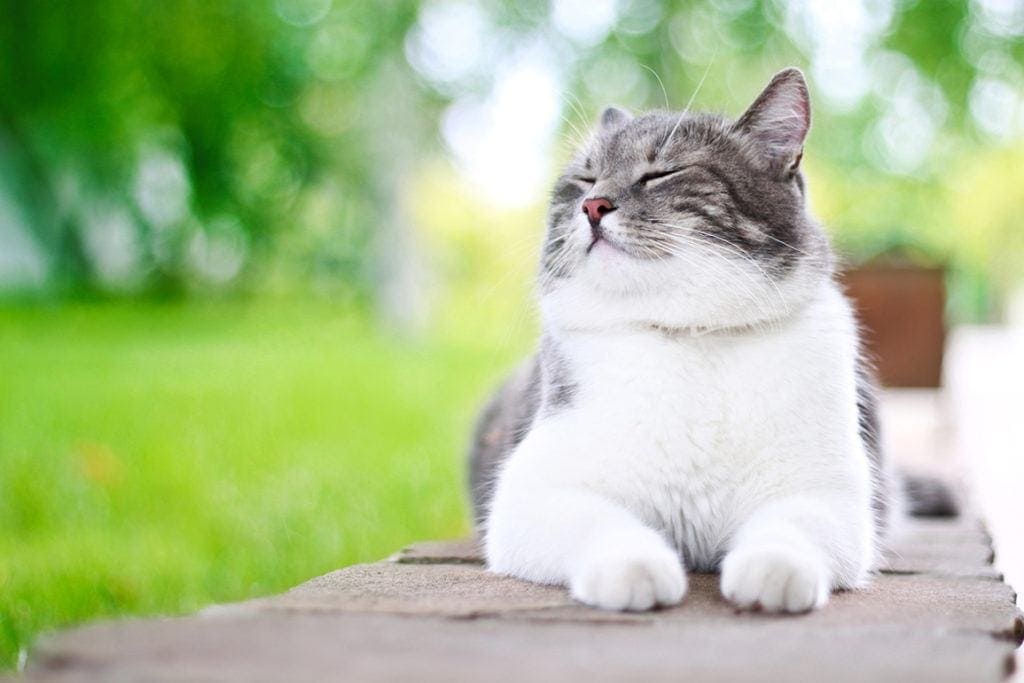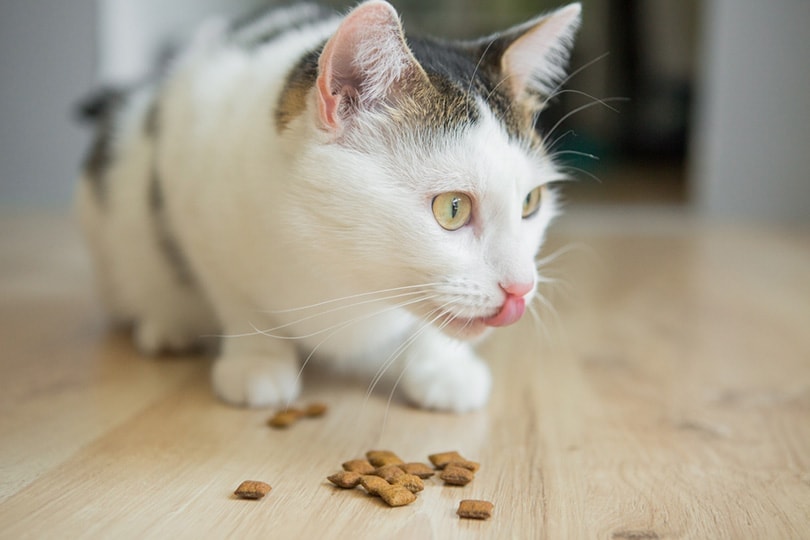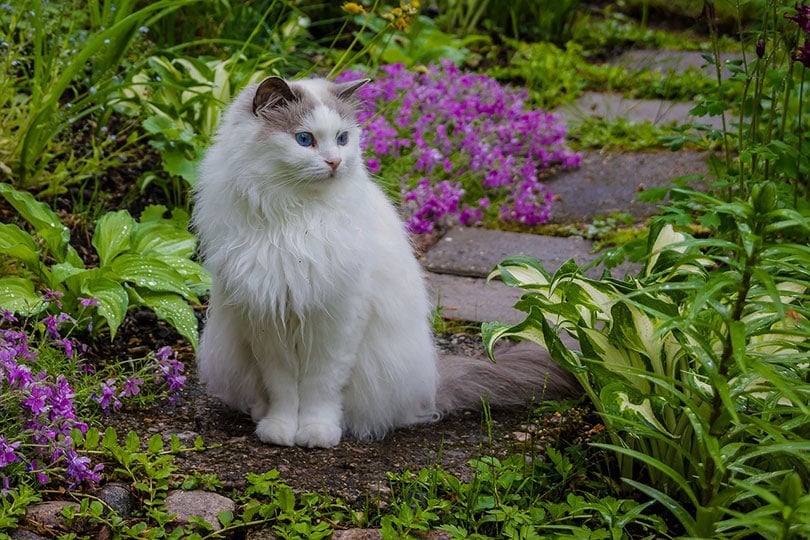Nightly visits from the neighborhood cats may not seem like a significant issue, but some visitors leave behind unwanted gifts and odors. Cat urine produces a potent aroma that can linger on plants, furniture, and hard surfaces unless it’s cleaned promptly.
Although the smell can seem challenging to eradicate, you have a few options for keeping your yard urine-free. We’ll examine the best methods for removing the scent on hard surfaces and landscaped areas.
Before You Begin
Dried urine is harder to remove than fresh stains, and you have around 8 hours, depending on the weather conditions, to treat an area before the liquid dries. Since most cats will visit your home at night, you can spray down your yard and patio furniture in the morning to remove cat pee from the previous evening.
Porous surfaces like unsealed concrete require longer soakings to ensure the liquid does not seep below the surface. If your bushes or trees are frequent targets of nocturnal visitors, you can try spraying water on the plants in the evening to make the environment less appealing to felines. Cats prefer not to urinate in spots where water has pooled, but this method is less effective in the summer months when water evaporates quicker.
Most chemicals used to remove urine odors are probably part of your everyday cleaning supplies, but you may have to purchase a specialized cleaner if ordinary chemicals fail to eliminate the smell. Here is a list of the cleaning supplies you need for the cleaning solutions:
- Baking soda
- Dish soap
- Hydrogen peroxide
- Trisodium phosphate (TSP)
- Vinegar
- Enzymatic cleaner
The Best Ways to Remove Odors From Plants and Soil
When cats pee or spray in your garden or landscaped sections, the smell is unmistakable, but luckily, it’s easier to treat than surfaces like concrete.
1. Baking Soda
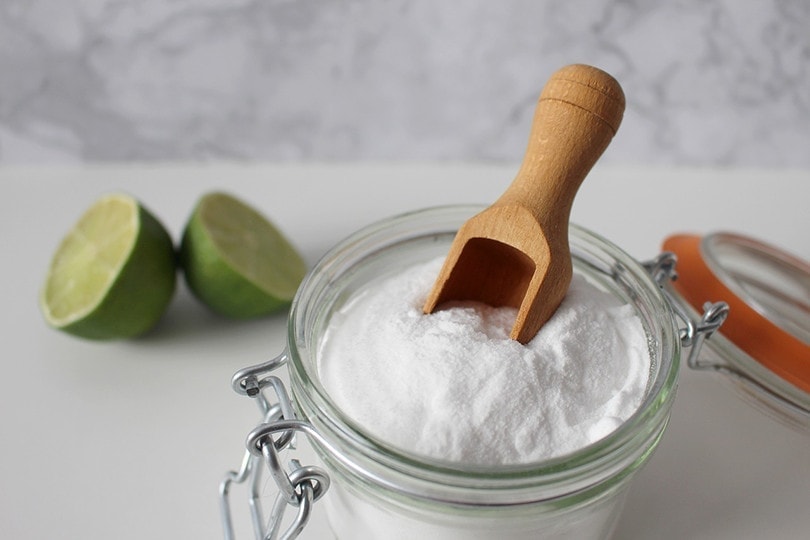
| Cost: | Low |
| Project time: | 30 minutes |
Plants and trees can be sprayed with a water hose for 10 to 15 minutes to remove urine odors, but dried urine on soil requires a bit more work. Baking soda is safe to use around your plants, and it can also reduce the growth of fungal spores on fruits and vegetables. To eliminate the urine odors on dirt, saturate the area with baking soda and allow it to sit for 30 minutes. Then, wash off the area and let it dry. If you still notice a scent, repeat the process until no odor remains.
2. Enzymatic Cleaner
| Cost: | Moderate |
| Project time: | 20 to 30 minutes |
If your plants still retain a faint urine odor, you can eliminate the smell with an enzymatic cleaner. Although they cost more than baking soda, enzymatic cleaners are the ideal tools for eradicating dried stains on your plants and trees. Most cleaners are plant-based and safe to use in your yard, but they’re more effective when you use them at cooler times of the day.
Enzymatic chemicals eat away the uric acid, but excessive heat can increase evaporation and reduce the product’s potency. Spray the cleaner on all affected areas and allow it to sit for the period recommended by the manufacturer. Most products only take 20 to 30 minutes to work.
The Best Ways to Remove Odors from Patio Furniture
Sprinkling baking soda on decking and other horizontal surfaces can absorb urine scents, but what do you do on vertical surfaces? Baking soda and other cleaning powders will slide off of chairs and table legs, but you can use an odor-eliminating spray to remove the stench from patio furniture.
1. Vinegar
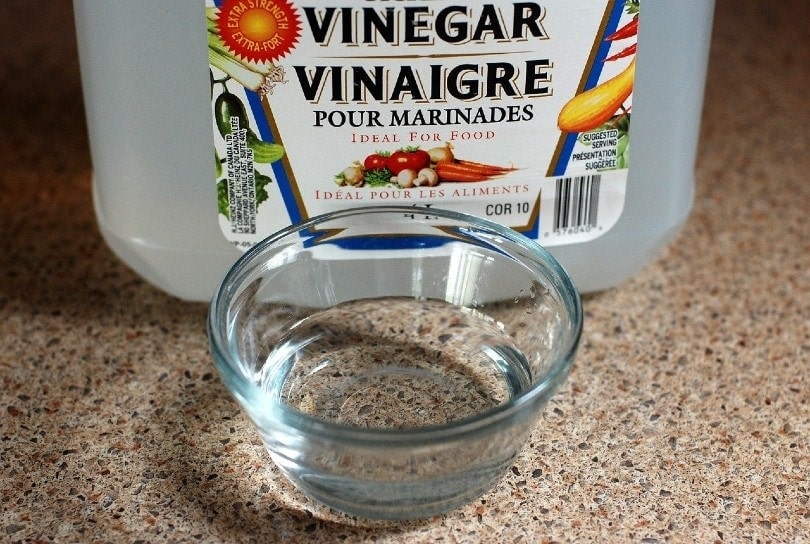
| Cost: | Low |
| Project time: | 10 minutes |
All vinegar products will react to the alkaline material in cat urine to remove smells, but distilled white vinegar is less likely to stain your furniture. However, vinegar can discolor treated wood if it stays on the surface too long. Before spraying the vinegar solution, test it in a small area to avoid altering the finish. Add 1 cup of vinegar to 1 cup of water and pour it into a spray bottle. Spray all surfaces and allow to sit for no more than 10 minutes. Rinse the area with soapy water and spray it off with a water hose. The vinegar scent should go away after a few days, but you may have to repeat the process if any scent remains.
2. Enzymatic Cleaner
| Cost: | Low |
| Project time: | 20 to 30 minutes |
Most cleaners are safe to use on plastic and wood furniture, but it’s best to check the manufacturer’s recommendations before applying the product. Remove the dirt and debris from the furniture and use the enzymatic cleaner. You can keep the cleaner from evaporating by moving the furniture to a shady area. Wait 20 to 30 minutes, then clean the spot with soapy water and rinse with the hose. Repeat the process if you detect urine, but most premium cleaners will take care of the stain in one pass.
The Best Ways to Remove Odors from Concrete
Sealed concrete repels liquid and is simple to clean, but untreated concrete can trap urine smells under the surface. When the temperature rises and humidity increases, the potent odor becomes more prominent.
1. Hydrogen Peroxide and Baking Soda
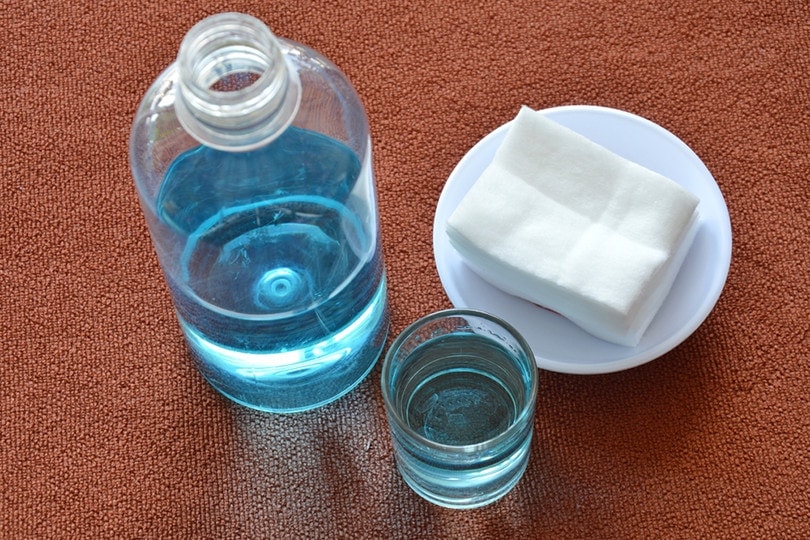
| Cost: | Low |
| Project time: | 1 to 4 days |
Use a water hose to spray off the excess urine and blot the concrete dry with a towel. Mix 2 cups of hydrogen peroxide with 2 teaspoons of baking soda and 1 teaspoon of dish soap. Pour the solution over the concrete and allow 24 hours before rinsing the spot with a water hose. You may have to repeat the process twice more before the odor disappears. Although this formula is your cheapest option, it’s not as effective as ammonia-free cleaners.
2. Trisodium Phosphate
| Cost: | High |
| Project time: | 24 hours |
Trisodium Phosphate (TSP)is a heavy-duty cleaner that eliminates stains and odors, but it should only be used in a well-ventilated area. The fumes from the chemical can be intense, and it’s wise to wear protective gear before using the product. Rinse the spot with a hose and mix ½ cup of TSP with 1 gallon of hot water. Pour the solution over the stain and work it into the concrete with a scrub brush. Rinse the spot with a hose and dry it off with a wet vac or leaf blower. Repeat the rinsing and drying twice more and wait 24 hours before checking the spot for odors.
3. Enzymatic Cleaner
| Cost: | Moderate |
| Project time: | 24 hours |
Since enzymatic products work best in cooler temperatures, you can wait until dusk before applying the product to the concrete. First, spray off the spot with a water hose and blot it dry with a towel. Apply the enzymatic cleaner and scrub the stain thoroughly for 10 minutes. Use a tarp or towel to cover the area and allow 24 hours for the chemical to do its work. Unlike other techniques, you do not have to rinse the area with water after using an enzymatic cleaner.
Keeping Cats Away from Your Property

It is difficult to prevent cats from entering your yard since they’re skilled climbers and leapers. However, you can use these techniques to persuade them to bother someone else.
- Spay or neuter your cat. Outdoor cats may be rushing to your property because they detect the scent of your pet.
- Remove outdoor pet food bowls and keep your yard and deck tidy.
- Install motion-activated sprinklers to keep nocturnal visitors away.
- Use scat mats on patio furniture and garden areas to make the area less hospitable to felines.
- Remove bird feeders and birdhouses. Some cats may be drawn to your yard during the day to hunt birds.
Final Thoughts
Cat urine odors can linger in porous materials like concrete for years, but your best defense against the horrid stench is a quick cleanup. Spraying your patio, deck, and walkways in the evening and morning can remove wet stains and reduce smells, but you’ll have to use one of the cleaning methods we discussed to remove dried stains. If you modify your property to make the environment less appealing to wandering cats, you can relax in your yard and enjoy the fresh air.
Featured Image Credit: islam zarat, Shutterstock

